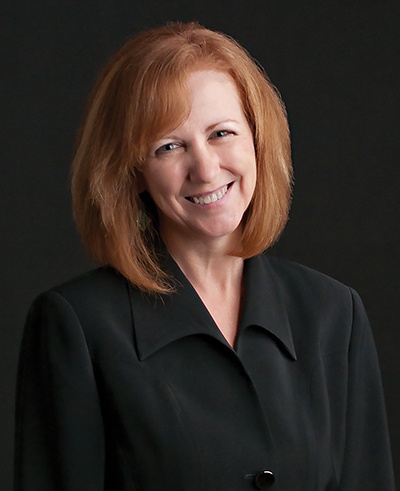

School BUSRide spoke with Kathleen Minke, executive director of the National Association of School Psychologists (NASP). Minke discussed the role of NASP in the education experience, how their work interfaces with the school bus, and how NAPT and NASP members can help each other in their mission to provide a safe and fulfilling experience for kids at school.
Please introduce yourself and your history in education.
I have been a school psychologist since the early 1980s and spent the early part of my career working in public schools in Virginia and Indiana. Eventually, I became a professor at the University of Delaware, where I worked preparing school psychologists for 27 years. I then retired and 48 hours later I became executive director at the National Association of School Psychologists (NASP). I had been involved in NASP as a volunteer leader almost from the very beginning of my career. I had been on the board, been the president. It was a wonderful opportunity to serve the profession in a different way as executive director.
What are your roles and responsibilities at NASP?
My primary responsibility is making sure that our staff, our hundreds of volunteer leaders, and our 25,000 members have the resources that they need to accomplish the work of the association and also to promote the profession more broadly. At NASP, we have a staff of around 30, an 18-member board of volunteer leaders, and 26 other leadership committees that do the work of the association in collaboration with the staff. There are a lot of plates spinning at any given moment, but one of the best things about my job is that I get to sit back sometimes and watch really talented people do their work. That is a wonderful job to have.
Please describe the mission of NASP.
In a nutshell, our mission is to empower school psychologists to promote the behavioral and mental health of all children and youth. Our goal is that all children will be able to access the supports that they need to thrive in school, at home, and throughout life. Our members are primarily frontline practitioners in pre-K to 12 schools. We also have a large contingent of graduate students who are preparing to become school psychologists and the graduate educators who are teaching them. We provide resources to support the work of practitioners, but also of graduate educators and graduate students across many formats. We produce books and publications, we offer virtual and face-to-face professional development, we provide access to an online learning center. We also have a robust online community that allows our members to talk to and learn from each other. It is great because it is a different focus than what you see on other social media platforms. It is very focused on professional issues and school psychologists supporting each other. All these things are really designed to make sure that a school psychologist, when they have a professional development need, knows that they can turn to NASP for high quality information that will support them in their work.
Another big chunk of our work is advocating primarily at the federal level for policies that will support a robust public education for all children. We have in our strategic plan three goals that are the focus of our advocacy work. That includes things like promotion of the NASP practice model, which details both the skills that can be expected from a school psychologist, but also the organizational conditions that need to be in place that will allow school psychologists to provide comprehensive mental and behavioral health services to all kids.
The second area that we focus on is advocating, primarily at the federal level, for expanding the availability of mental health supports at school. As is true across education and mental health, there is a serious shortage of school psychologists right now. That shortage really does impact the ability of students to learn and thrive. A lot of our work is centered on trying to expand opportunities to train as a school psychologist and opportunities for school districts to actually hire school psychologists and other school-based mental health service providers.
Finally, we have a large focus on policies that promote equitable opportunities for all students. We interpret that broadly to mean including attending schools that are physically and psychologically safe for all students, and that are socially just in their practices. So, we pay attention to things like how discipline is delivered to kids and whether or not that is disproportionate depending on who those kids are.
What programs does NASP offer to achieve that mission?
We have various formats that we use. For example, we are just now publishing the seventh edition of a multi-volume set called Best Practices in School Psychology. The book contains the core content knowledge that school psychologists should have. We are about to embark on a two-day virtual learning session, which focuses on skills for managing challenging situations. We know that what we learn in graduate school and what happens in actual schools, buildings, and classrooms can be a bit different. So, that training is designed to provide a boots-on-the-ground experience, nitty-gritty details on what to do when you are faced with a situation where the team is not functioning well together, or a situation where the school staff and the families are not functioning well together, for example.
Our professional development through our conventions and through our online learning center covers topics that support direct service delivery. Things like: how to do a good psychological assessment on a kid who may require special education services, consulting with teachers, providing counseling services. We also spend a good bit of time helping school psychologists think systemically about their work so that they can be a partner to other educators in making sure that structures are in place to help kids be successful. We know what those are, but they can be very difficult to do in practice and so a lot of our professional development is focused there as well.
Coming up in a couple of weeks we also have our Public Policy Institute where we help attendees understand how to successfully contact their members of Congress and engage in advocacy that is likely to be effective.
How does the school bus interface with the work you do?
We know that kids don’t learn in a vacuum. What is happening in their lives at home is going to impact what happens on the bus. What happens on the bus is going to impact what happens in the classroom. What happens in the classroom is in turn going to influence what happens at the end of the day on the bus. It is a cycle in which everyone who is involved in a child’s life needs to be part of the planning and implementation of those structures, of the kinds of interventions that will help all kids be successful. I think about when I was a school psychologist, I spent quite a lot of time talking with folks about bus behavior. It felt like it was one of those places where kids perhaps have a little bit less adult supervision than is happening in the school because often there is just the bus driver, and the bus driver is busy driving.
So, we expect kids to be able to demonstrate good self-regulation skills in that environment. We expect them to demonstrate good social, emotional, and behavioral skills. School psychologists who are partnering with teachers in building those skills in the classroom, can also partner with folks in transportation to make sure that kids know what the expectations are and how to manage themselves as they are engaged in the bus ride to and from school. I feel that these are essential partnerships. Some schools are probably doing a better job than others in making sure that all of the environments in which kids are being asked to function, especially when they are being asked to function independently, are part of the conversation as we are figuring out how kids are doing. The primary issue is: what can we be doing differently to support kids more effectively?

In their daily work in districts across the country, how can NAPT members help NASP members in their mission?
I think the notion of being a member of the team and seeing themselves as a member of the team is really, really important. Every school, in an ideal world, will have a very carefully planned, implemented with fidelity, and frequently evaluated system of support for kids. We think about kids as just being in the classroom or just being in the lunchroom or just being at home. They are asked to be successful in all of these places, and we need to have integrated systems that will support them. NAPT members, as well as NASP members, need to be at the table when plans are being made. Both groups should be receiving training in how the school’s system of support is set up. What are the school-wide expectations for kids’ behavior? How does that look on the bus as opposed to in the lunchroom, as opposed to in the classroom? Does the transportation staff get an opportunity to participate in that planning and implementation so that they are actually part of building the plan in a way that is likely to be successful?
It is really important that both groups of professionals know how to develop positive, supportive relationships with kids and to be able to recognize those kids who are struggling and may require additional support or interventions in order to be successful. I think that everyone who has interactions with youth as part of the school day needs to have those skills because kids do not always turn to their teacher, or they may not even know they have a school psychologist. They see that bus driver every morning and the bus driver can say hello and know their name and begin to foster that sense of belonging that kids need to thrive at school. We have a saying around here that if you do not have a seat at the table, you should bring a folding chair and just be there until they pay attention to you.
How can the NASP and NAPT associations work together to better the lives of the students they serve?
The first step for me is always what are our shared goals as associations and as professionals? At a minimum, we have a shared goal of supporting the healthy development and learning of all children and youth. What follows from that is when we are making plans, our members should be looking for your members to see if you are around the table. The same is true if there are challenges that transportation is facing, do they ever look around to say, “well, who are the individuals here that might be able to help us understand better what is happening with kids in our space and how we work together to try to improve that?”
With your unique expertise, what advice can you give to pupil transportation professionals seeking to enhance the daily experience of their students?
Every adult who has the opportunity to interact with kids has an opportunity to improve children’s school experience. Building relationships with the kids that you are transporting, especially those kids who are sitting on the margins, the kids who do not have friends or the kids who are the targets of bullying. Learning their names and their interests and talking with them is really important. It may be the difference between that kid having a really crummy day at school and having a better day at school. Kids are very, very powerful consultants on their own behavior when we ask them what they need, and then we listen to what they have to say. My whole career was really premised on the notion that relationships are the most important thing and that we should be looking to build them in every opportunity that we have.
Similarly, establishing connections with those kids who do have social standing and may sometimes use their power in less than positive ways. Kids who may be bullying others or who may be the perpetrators of teasing and those kinds of things, trying to forge connections with those kids as well, and helping them think through how what they are doing is either enhancing or diminishing the experience of everybody as they are trying to get themselves to and from school. Thinking systemically a little bit as well, if there are troubles on the bus, are there structural changes that could be made that would lessen these kinds of problems? Sometimes changing the bus route to have a child who has experienced challenges on the bus dropped off earlier rather than later may make a difference.
Sometimes we get so focused on the individual child and what that child’s behavior is or what they may or may not be doing, that we do not think more broadly and more structurally. Is there something else that we can do differently that would support this child that does not necessarily involve a very complicated intervention? And sometimes that is in relationships, and sometimes that is just in the basic structures that we build around the child.
In general, just try to be an adult that kids feel like they can trust. You do not have to know all the answers. You are not a counselor or therapist, it is okay to say you do not know something, but kids know who cares about them, they know who is interested in having them be successful. Just that knowledge, even if the kid never really acknowledges that relationship, is powerful. You may never know the positive effect that you have had on a particular child, but I do know that one caring adult truly can make a huge difference in the life of a child.


